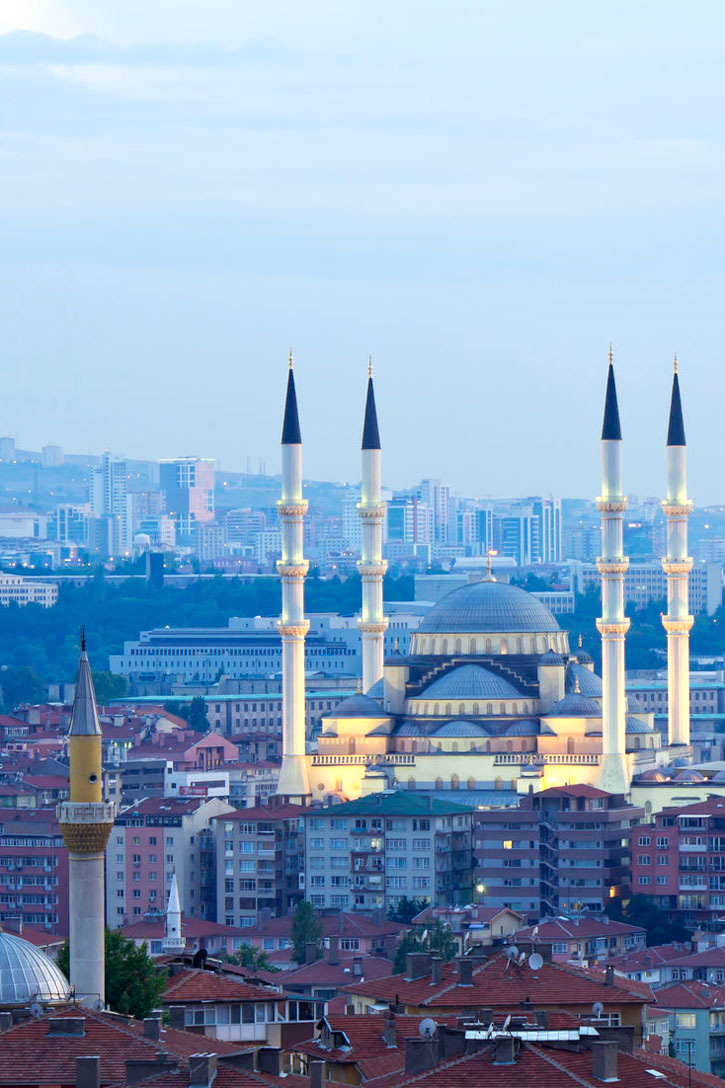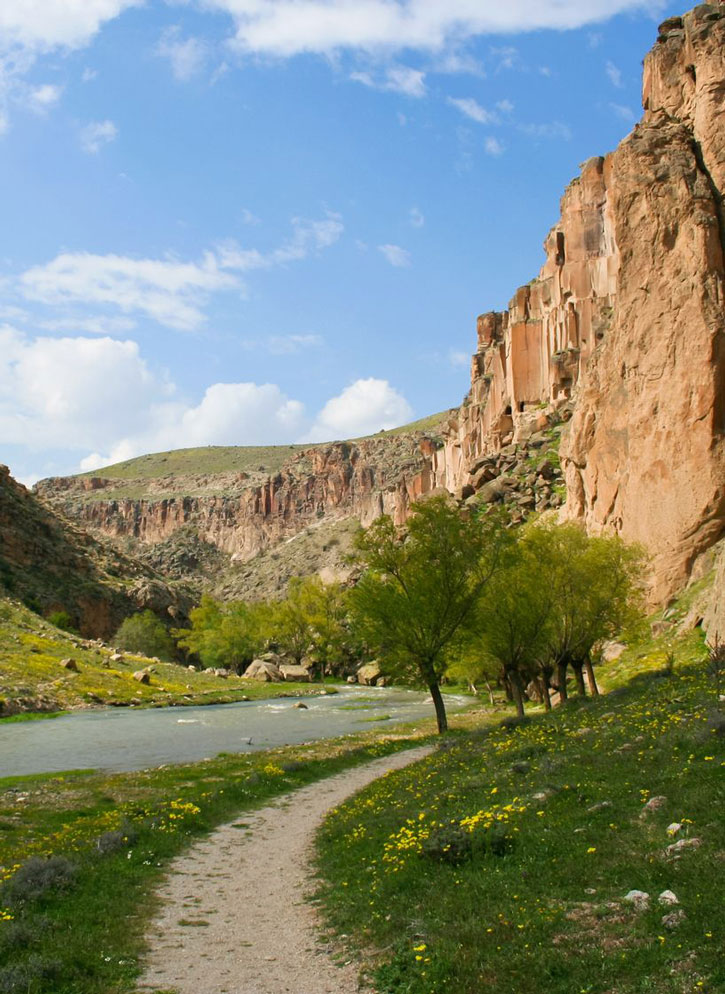
The iconic Kocatepe Mosque in Ankara, Turkey. Photo © Mesut Dogan/123rf.
Cappadocia’s spectacular landscape may be central Anatolia’s pearl, but the rest of the region is worth a look to appreciate Turkey’s history and diversity.There’s history that still remains buried deep in the earth’s layers. Suffice it to say that this strategic corridor, stuck between the East and the West, was the center of trade routes for eons. First, the Assyrians were lured by the wealth of ancient Anatolians around 2000 BC. Then came the Persians, the Greeks, the Romans, and the Selçuk emirates; each group left its cultural mark. Places like Hattuşaş, Cappadocia, and Konya are imprinted with traces of the ancients. Atatürk’s famed capital, Ankara, is a perfect mix of old and new, as found in the pre-Hittite Citadel district and its spectacular mid-20th-century buildings.Cappadocia’s spectacular landscape may be central Anatolia’s pearl, but the rest of the region is worth a look to appreciate Turkey’s history and diversity. You will find the lunar landscape of Cappadocia; the sheer amount of history and culture; the country’s adoration for Atatürk; and the region’s exclusive haunts absolutely stunning.
A decent exploration of the Cappadocia region requires at least three days. If you’re also visiting Konya and Ankara, take six days. Base yourself in Göreme or pricier Ürgüp. The best time to visit arid central Anatolia is in the off-season, spring and fall. Summer in the unshaded valley is hot—often over 40°C—making a visit too exhausting.

Beautiful Ihlara Valley in Capadoccia. Photo © jahmaica/123rf.
Cappadocia’s cave hotels are the recommended accommodations, since these remain cool throughout summer and warm in winter. There’s also a significant difference between day and night temperatures, sometimes as much as 20°C. The winters in the Anatolian heartland are freezing, with an average temp of -2°C December-February. The plus side, however, is that the already magical scenery gets even better with a thick cover of snow, up to 30 centimeters. This climate in no way hinders sightseeing; it gets even better when Mount Erciyes (Argeus), east of Cappadocia, opens for skiing and heart-pounding all-terrain vehicle touring.
The Konya Whirling Dervish Festival in mid-December is a great time for Rûmî fans to visit. Ankara comes alive for Victory Day, August 30, marking Turkey’s victory over the Greeks in the Battle of Dumlupınar in 1922, one of last defining battles of the 1919-1923 Turkish War of Independence.
Excerpted from the Second Edition of Moon Istanbul & the Turkish Coast.